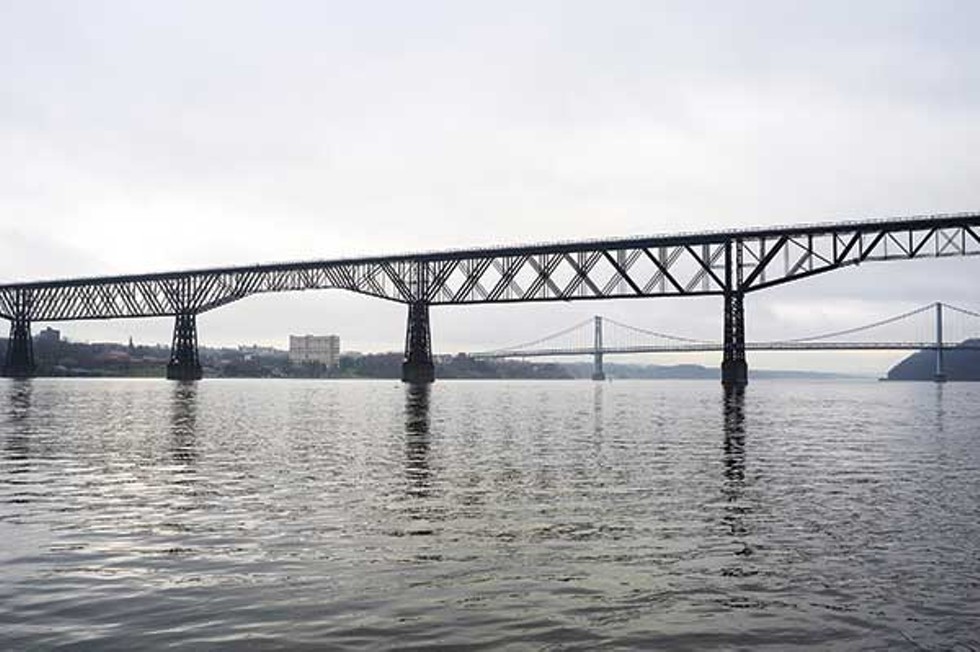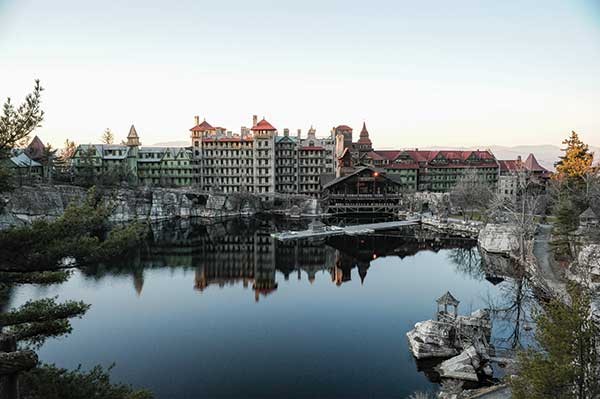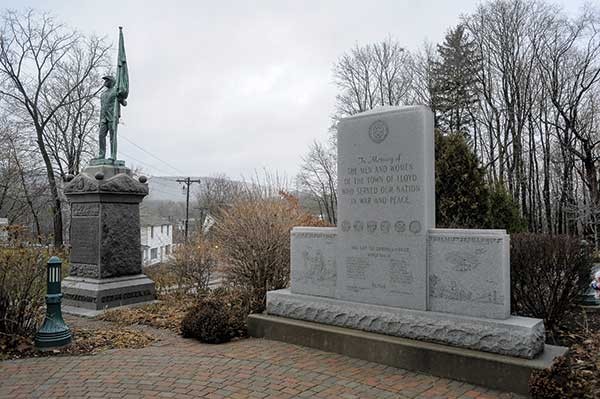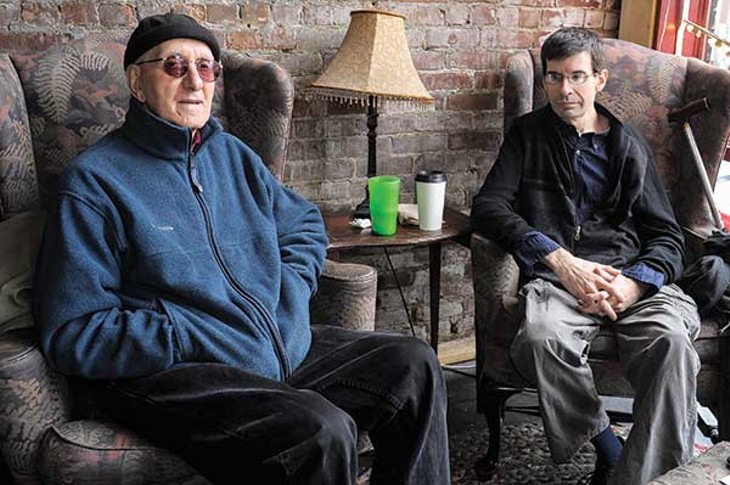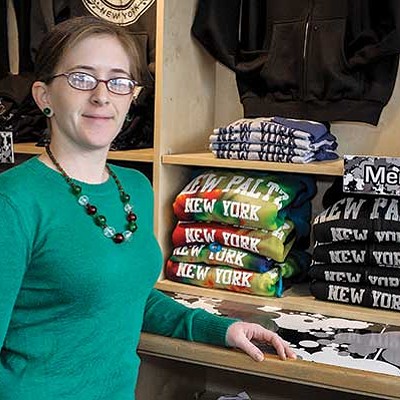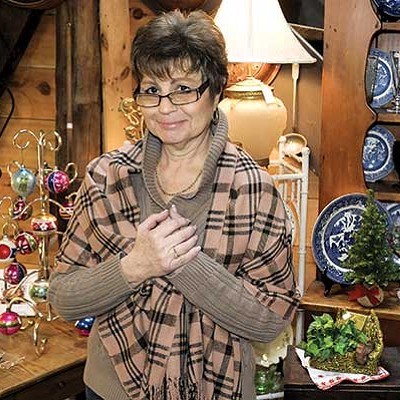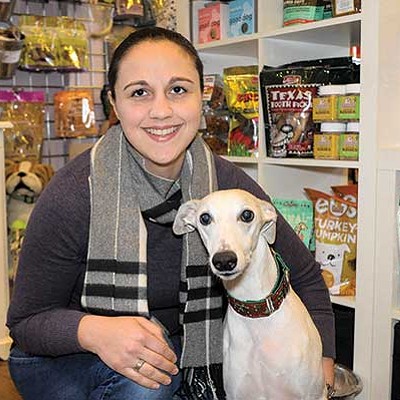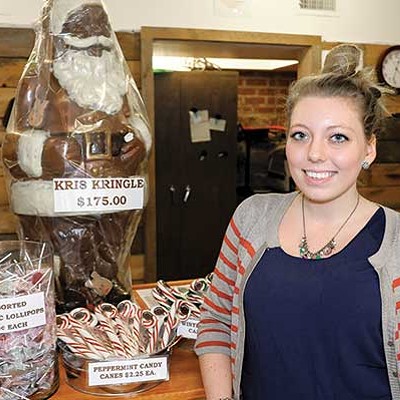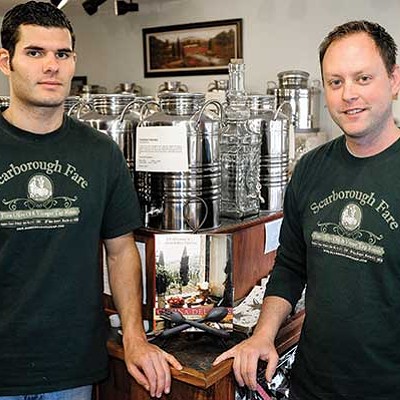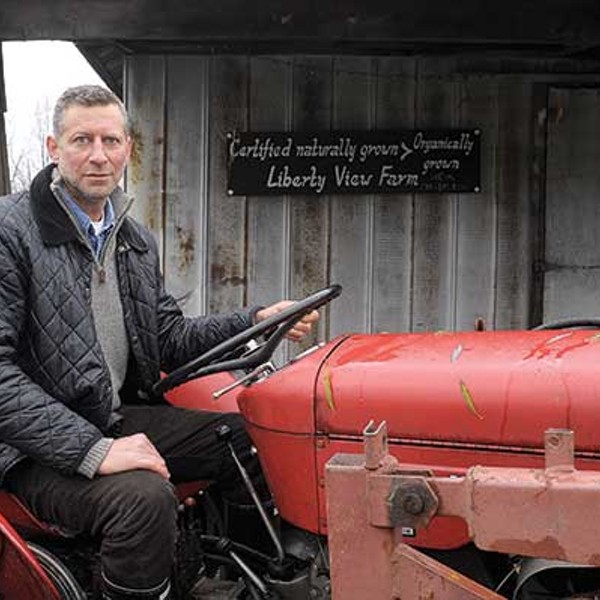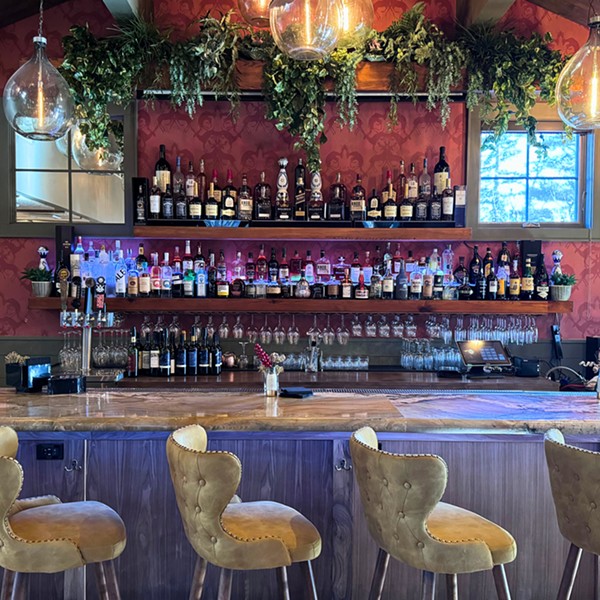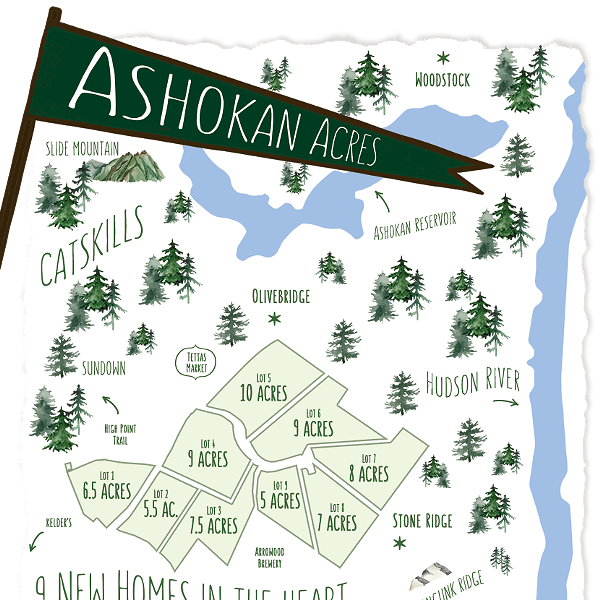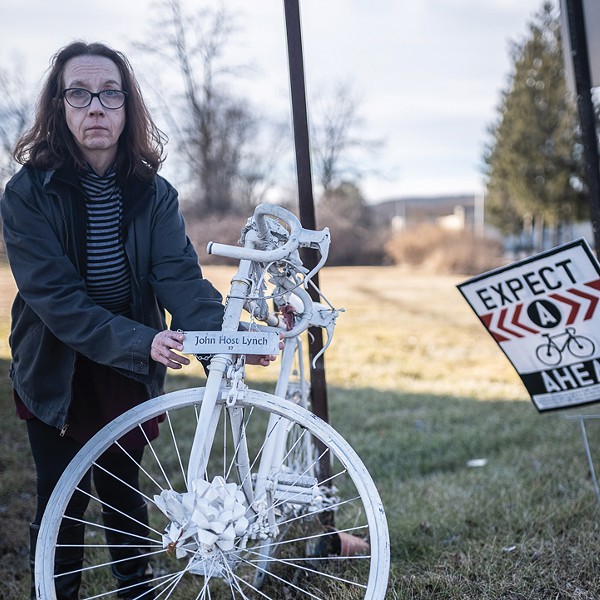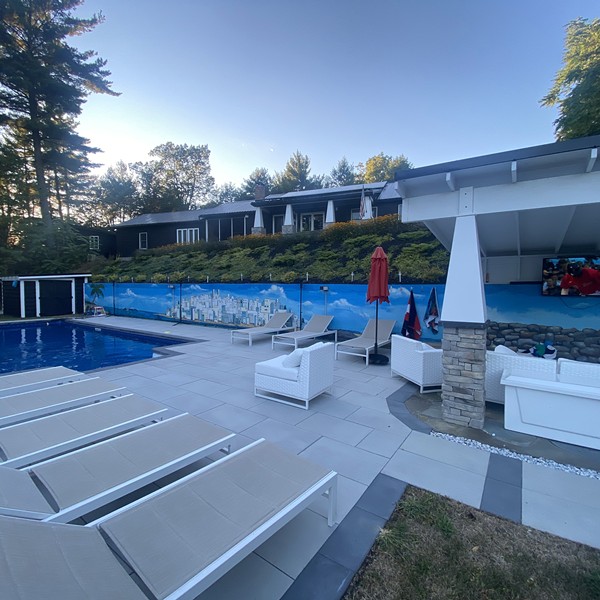There are places whose character is easily identified and well defined. They have names that are synonymous with particular activities, attractions and lifestyles. But there are others that are less circumscribed, less predictable, and, in some ways, more interesting. Such places give us the opportunity to discover hidden treasures and to be more creative in our perception of the world. The unassuming stretch of Route 299 east of New Paltz and Route 9W from Highland south, with its strip malls, fast-food restaurants, gas stations, and motels, wouldn't seem to offer much in the way of character or charm. But to turn off the highway onto country roads is to be transported immediately into rolling hills and valleys full of apple orchards, charming historic towns, and stunning natural scenery.
The Towns of Highland, Milton, and Marlboro may not be well-known destinations like some of their sisters in Ulster County, but they offer a variety of hidden gems all set in the natural splendor of the Hudson Valley. And though we think we may think we know the Town of New Paltz, so defined by the presence of SUNY New Paltz, it, too, contains treasures that lie off the beaten path.
A Trail Runs Through It
Together with the Hudson River, one of the defining geological features that connects the towns is the Marlboro Mountains, a group of hogbacked mountains arranged in a 25-mile-long ridge extending from Newburgh to just south of Kingston. They form a broken ridgeline running from the Ulster–Orange County border in the south to the mouth of Rondout Creek in the north. Considered to be part of the Ridge and Valley Appalachians, the mountains, which reach elevations over 1,100 feet, form an imposing geologic barrier just west of the Hudson River. Rising abruptly on their eastern flank, the Marlboro Mountains are known for their sweeping views of the region.
Just south of Route 299, about halfway between New Paltz and the junction of Routes 299 and 9W, is Tony Williams Park, where the Hudson Valley Rail Trail terminates on the western side of the Hudson River. The park lies at the base of Illinois Mountain, which is named after the state and is one of the highest peaks in the Marlboro range. During the early 1800s, there was a westward migration of New Englanders to the area of the former Northwest Territory, which included Illinois and Ohio. Some settlers, however, never reached their intended destination, being cut off by the swamps just west of the Marlboro Mountains. Setting up homesteads in the area, the settlers named local places and geographic features after the lands they never reached. Ohioville, near New Paltz, is an example of another area with the same etymological lineage.
The Rail Trail offers something for everyone, all year long. In fair weather, hike it or bike it, ride on horseback or roller blades, or take the little ones for a stroll. In winter, cross-country ski it or make your way on snowshoes. The Hudson Valley Rail Trail offers visitors a scenic tour through the former railbed that connected Ulster and Duchess Counties by train. Now, pedestrians and bikers can make the trip over the river via the spectacular Walkway Over the Hudson, the former Poughkeepsie-Highland Railroad Bridge and, presently, the eastern terminus of the Rail Trail. With plans for expansion in both directions, the HVRT and the Walkway have far exceeded planners' expectations for visitorship. The Walkway currently attracts over half a million visitors year, pumping $24 million annually into the local economy.
Before or after your trip across the river, hop off the Walkway into the adjacent hamlet of Highland. Earlier in the 20th century, many Hudson Valley towns attracted families hoping to escape the heat and crowds of the city for the expanse of the countryside, and particular ethnic groups tended to cluster together. Highland attracted Italian-American families, and that heritage is still reflected in some of the shops you'll find, especially Elia's Market, a good old-fashioned Italian meat market with house-made sausage. Chef Mark Elia will even teach you the art of sausage making in his Old World Italian Sausage Making class! Elia also does catering and makes some of the best barbeque in the Hudson Valley.
For a quick bite, grab a slice at Three Guys Pizzeria on Vineyard Avenue or, for something different, get some dim sum at Asian Garden on Main Street. For true Highlanders of the Scottish variety, stop in at Kiltmaker's Apprentice, where you can rent a kilt for that special occasion. Co-owner Doreen Browning can even fit you for a custom kilt made to order. A charming shop and well worth a visit—after all, when's the last time you shopped for a kilt?
If you're looking for fine dining, The Would Restaurant offers it in an old-resort atmosphere. Originally part of the summer resort Hotel Di Prima, which opened its doors in 1926 serving primarily Italian-American visitors, the Would has a long history of warm hospitality. Guests have said that "the old resort atmosphere relaxes you and takes you back to slower days." On summer evenings, enjoy dining on the porch while watching the bocce players. In the winter, dine by a crackling fire with white linen tablecloths, candlelight, and fresh flowers.
For a somewhat more rustic and decidedly more Teutonic experience, check out nearby Gunk Haus in Clintondale at the intersection of South Street, Maple Avenue, and Hurds Road. Gunk Haus serves up traditional German fare (all the sausages are made by Mark Elia) and a fine list of beers imported from Germany, as a well as a fine list of wines, all in a spectacular setting overlooking the Shawangunk Ridge. And if wedding bells are in your future, nearby Liberty View Farm will provide just the right mix of country charm and urbane elegance, all courtesy of farmer Billiam van Roestenberg (voted "Hottest Farmer in America" by the Huffington Post) and his partner Rene. For a relaxing country getaway, stay with Billiam and Rene in their farmhouse or in a deluxe yurt in the orchard.
A bit further south on Route 9W in the town of Milton, you'll find Buttermilk Falls Inn and Spa, a 75-acre estate offering a combination of historic elegance, modern luxury, country charm, and sophisticated amenities.
Once through the stone gates of the estate, you'll be transported to a bucolic, self-contained retreat on the banks of the Hudson River. Recharge in one of the charmingly historic bedrooms or guest houses, enjoy a spa treatment utilizing home-grown fresh herbs, or take a stroll of discovery on a network of trails leading to ponds, the property's impressive namesake waterfall, wildflower fields, and lush gardens sprouting dramatic sculptures. You can also savor a memorable dining experience at Henry's at the Farm Restaurant. In addition to rejuvenating Hudson River Valley getaways, the Inn is available for weddings, receptions, special occasions, and business retreats.
For those with a sense of nostalgia and a taste for the "old-school," John Foglia's Ship Lantern Inn on Route 9W in Milton is the oldest restaurant in the valley serving continental food, enjoying its third generation of family management. The building dates back to Revolutionary War days and its nautical décor features miniature sailing ships from Foglia's personal collection. Of historical note, Foglia, along with Chef Paul Boiardi, was one of the four original founders of the Chef Boy-Ar-Dee Company. But you won't find canned ravioli on the menu, which features such classics as cioppino and veal osso buco Milanese.
A bit further south, the town of Marlboro has, in recent years, become a hot spot for lovers of jazz and live music. The Falcon, brainchild of civic-minded musician Tony Falco, began in 2001 as a series of wildly successful house concerts featuring some of the best-and-brightest of the New York City jazz music scent. In 2005, Falcon Music & Art Productions, Inc. purchased a 19th-century button factory in the center of the hamlet of Marlboro, perched over the Marlboro Falls, once used to power the factory. The main floor of the building had also functioned as a roller-skating rink, community center, and cabinet factory. Now, it's become the "Village Vanguard of the Hudson Valley" —a rural mecca for the finest in jazz, blues, rock, and contemporary chamber music. Incredibly, there is never a cover at The Falcon—all donations to the artists are completely voluntary. Like Falco himself, the crowd at The Falcon is community minded and generously supportive of the arts. The Falcon now features a full dinner and Sunday brunch menu.
Housed in what was the oldest hotel still in existence in Marlborough, the historic Raccoon Saloon got its name from the family of raccoons that once lived there and would peek out through an opening in the wall to be fed by enthusiastic patrons. The raccoons are gone now, but owner Rita Truesdale has done much to preserve the 19th-century ambiance of the Raccoon, which offers an extensive menu that goes far beyond the burgers, which are among the best in the Valley.
The Road More or Less Traveled
Just off Exit 18 of the New York State Thruway, The Town of New Paltz is a major destination in the Hudson Valley. It is, to a great extent, defined by the presence of the college, one of the largest and most prominent in the state university system. Yet its historical roots give a dimension to the town that goes much deeper than the many bars and pizza joints catering to college students. Huguenot Street, dating back to the 17th century, is the historical heart of the town.
Though usually described as Huguenots, some of the founders of New Paltz were actually Walloons—French-speaking Protestants who came from northern France and what is now Belgium. Both Huguenots and Walloons were followers of John Calvin (1509-1564), the French theologian and Protestant Reformation leader.
Seeking freedom from persecution by Catholic authorities, the "New Paltz Huguenots" sailed to America in the 1660s and 1670s. They traveled to present-day Kingston and founded New Paltz, named after "Die Pfalz" in Germany, where they had received temporary refuge before fleeing to America.
In 1677, 12 men (the "Duzine") from the Bevier, Crispell, Deyo, DuBois, Freer, Hasbrouck, and LeFevre families met with the Esopus Indians and purchased 40,000 acres of land stretching from the Shawangunk Mountains to the Hudson River. In exchange, the Esopus received domestic supplies, farming tools, clothing, blankets, wine, horses, tobacco, and gunpowder. Today, the 10-acre National Historic Landmark District includes a visitor center, seven stone-house museums, a reconstructed 1717 French church, and an early burial ground. HHS also maintains an extensive archive that preserves early local history collections and family papers, along with a research library.
Eventually, the Hudson Valley Rail Trail will be connected on the western side all the way through New Paltz to the Shawangunk Ridge, giving visitors uninterrupted access to the natural splendor of the region and the rich history of the land that the Esopus Indians and the Duzine knew 350 years ago. A short trip off the beaten path can make you feel as if very little has changed.
Resources
Androgyny
Barner Books
Coral Acres Topiary Design
Ethan Allen
First Care Walk-In Medical Center
Fleet Service Center (845) 255-4812
Gray Owl Gallery
Haven Coffee & Espresso Bar
Il Gallo Giallo Wine Bar
Jack’s Meats & Deli
Jenkinstown Motors
LaBella Pizza Bistro
Lighthouse Solar
McGillicuddy’s
Peaslee Design
Primal Life Training
Samuel Dorsky Museum
SUNY New Paltz School of Fine & Performing Arts
Water Street Market







